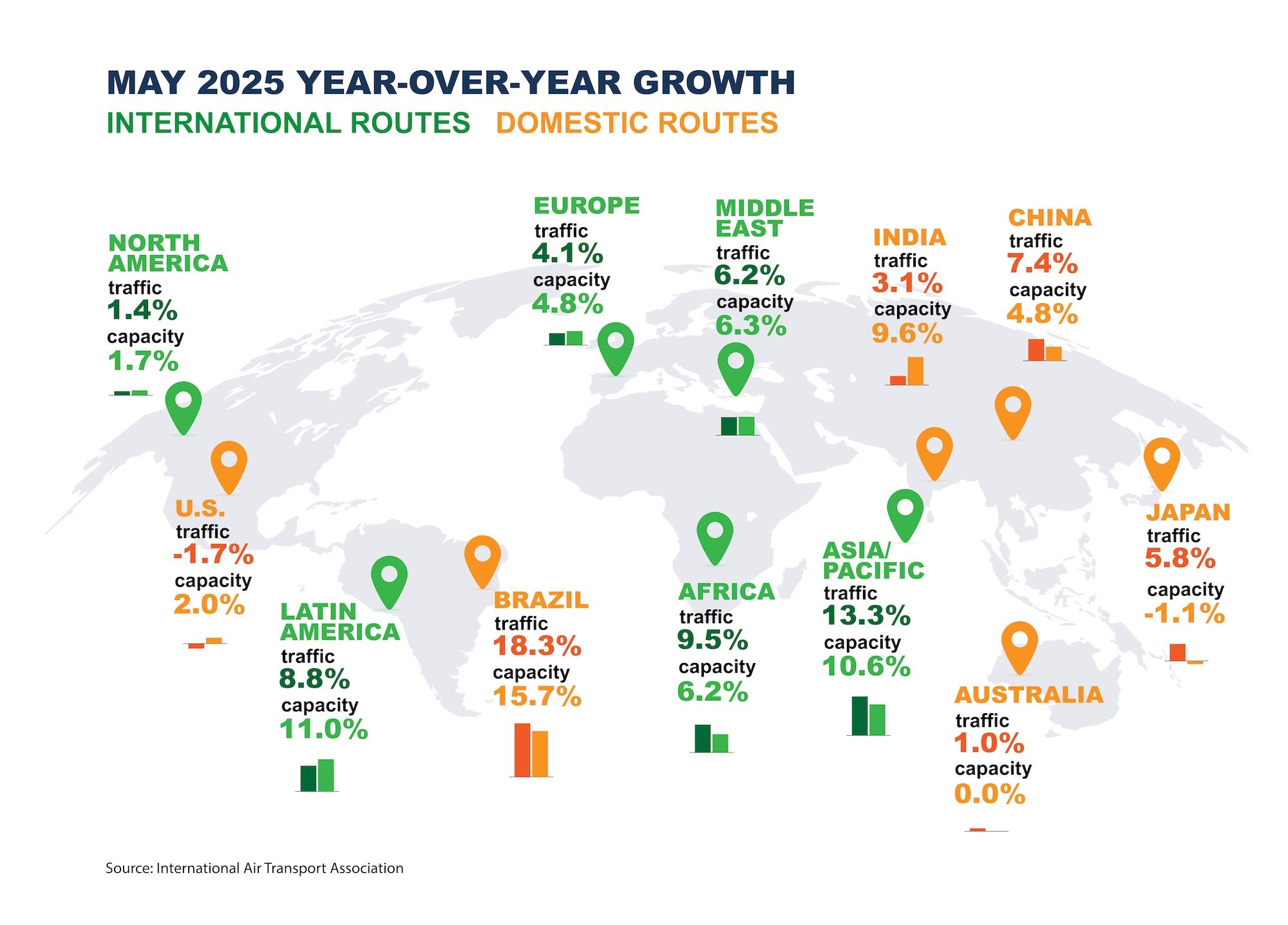May U.S. domestic air travel demand, as measured in revenue passenger kilometers, declined for the fourth month in a row, according to the International Air Transport Association. U.S. traffic decreased 1.7 percent year over year, following declines of 4.2 percent in February, 1.7 percent in March and 0.5 percent in April.
Economic uncertainty and a reduction in government travel contributed to the contraction, according to IATA. The May U.S. passenger load factor dropped 3.1 percentage points year over year to 83 percent, while capacity, measured in available seat kilometers, increased 2 percent compared with May 2024.
Total May global demand increased 5 percent year over year, as did capacity. The May load factor was down 0.1 percentage point to 83.4 percent versus May 2024.
May international demand rose 6.7 percent year over year, while capacity increased 6.4 percent. Load factor increased 0.2 percentage points to 83.2 percent, the highest on record for May international flights, according to IATA. Domestic demand was up 2.1 percent versus May 2024, while capacity increased 2.8 percent during the period. The overall domestic load factor slipped 0.5 percentage points to 83.7 percent.
“Air travel demand growth was uneven in May,” IATA director general Willie Walsh said in a statement. “Severe disruptions in the Middle East in late June remind us that geopolitical instability remains a challenge in some regions as airlines maintain safe operations with minimal passenger inconvenience. The impact of such instability on oil prices—which remained low throughout May—is also a critical factor to monitor. Importantly, consumer confidence appears to be strong with forward bookings for the peak Northern summer travel season, giving good reason for optimism.”
[Report continues below chart.]

All regions except North America in May reported total demand increase ranging from 3.4 percent year over year to 9.4 percent. North America’s decline was 0.5 percent. Global capacity increased for each region, led by Latin America at 9.6 percent year over year. North America had the lowest gain at 2 percent.
International air demand in May increased in all regions, led by Asia-Pacific gaining 13.3 percent year over year, followed by Africa with 9.5 percent. Each region also reported capacity increases for the month, led by Latin America at 11 percent and Asia-Pacific at 10.6 percent.
Aside from the U.S. domestic decline, all other regions in May reported traffic gains, with Brazil increasing 18.3 percent year over year, while its capacity grew 15.7 percent. The only country to report a capacity decline was Japan, dropping 1.1 percent from May 2024.
(Except for the headline, this story has not been edited by PostX News and is published from a syndicated feed.)

